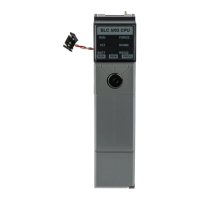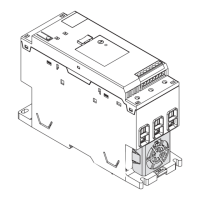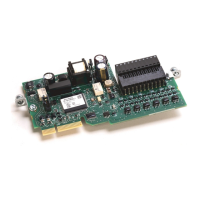Rockwell Automation Publication MOTION-RM002H-EN-P-February 2018 171
ExecutionSchedule immediate
pending
forwardonly
reverseonly
bidirectional
0
1
2
3
4
MasterReference actual
command
0
1
MasterDirection bidirectional
forwardonly
reverseonly
0
1
2
MOTION_INSTRUCTION Structure
Mnemonic Description
.EN (Enable) Bit 31
It is set when the rung makes a false-to-true transition and remains set until
the rung goes false.
.DN (Done) Bit 29 It is set when the axis' position cam has been successfully redefined.
.ER (Error) Bit 28
It is set to indicate that the instruction detected an error, such as if you
specified an unconfigured axis.
.IP (In Process) Bit 26
It is set on positive rung transition and cleared if either superseded by
another Motion Axis Position Cam command, or terminated by a stop
command, merge, shutdown, or servo fault.
.PC (Process Complete) Bit 27
It is cleared on positive rung transition. It is set when the position of the
master axis leaves the master position range defined by the currently active
cam profile if Execution Mode = Once.
Description
The MAPC instruction executes a position cam profile set up by a previous
Motion Calculate Cam Profile (MCCP) instruction or, alternatively, by the Logix
Designer application Cam Profile Editor. Position cams, in effect, provide the
capability of implementing non-linear electronic gearing relationships between
two axes. No maximum velocity, acceleration, or deceleration limits are used. The
speed, acceleration, and deceleration of the slave axis are completely determined by
the motion of the master axis and the designated cam profile derived from the
associated cam table.
The maximum velocity, acceleration, or deceleration limits established during axis configuration do not
apply to electronic camming.
The direction of Slave Axis motion relative to the Master Axis is defined by a
flexible Direction input parameter. The camming direction, as applied to the slave,
may be explicitly set as the Same or Opposite or set relative to the current
camming direction as Reverse or Unchanged.
To accurately synchronize the slave axis position to master axis position, an
Execution Schedule setting and an associated Master Lock Position can be
specified for the master axis. When the master axis travels past the Master Lock

